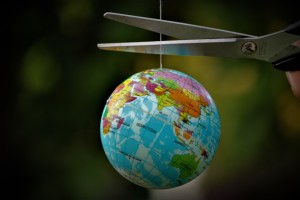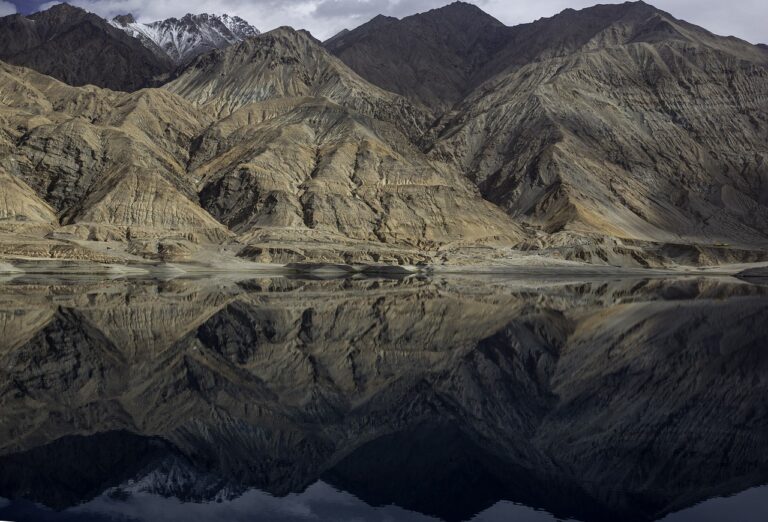
New York: With rising sea levels and the the devastation that climate change brings to communities and nations, the heartbreaking impacts of climate change is very much visible in the Pacific region now. “I will never forget my last visit to the Pacific. It is one thing to hear about rising sea levels and it is another to see it first-hand the impact on people’s lives and to meet children who are anxious about their future. I saw with my own eyes the deep challenges that vulnerable small island developing states are facing, United Nations Secretary-General António Guterres said at the Pacific Islands Forum High-Level Round Table on Urgent Climate Change Action, earlier this month.
Time and again, more in recent times, when both climate change and the COVID-19 pandemic pose stiff challenge to the world’s transition to a sustainable future, the United Nations has warned that our planet is heading towards “catastrophic temperature rise”.
What is good is that more and more countries are waking up to this threat and more and more countries have now committed to net‑zero emissions. . But this is also a fact that five years after the adoption of the Paris Agreement on climate change, the commitments made in Paris are still not being met. Paris promised to limit temperature rise to as close to 1.5°C as possible. Today, Carbon dioxide levels are at record highs and the planet is 1.2°C degrees hotter than before the industrial revolution. “If we don’t change course, we may be headed for a catastrophic temperature rise of more than 3°C this century. Can anybody still deny that we are facing a dramatic emergency?” asked Guterres at a Climate Ambition Summit on December 12, marking the fifth anniversary of the adoption of the Paris Agreement on climate change, and the beginning of a pivotal year towards the Glasgow COP as well. He went on to call on all leaders worldwide to declare a state of ‘Climate Emergency’ in their countries until carbon neutrality is reached. “Some 38 countries have already done so, recognising the urgency and the stakes. I urge all others to follow,” he said.
So far, the members of the Group of 20 (G20) are spending 50 per cent more in their stimulus and rescue packages on sectors linked to fossil fuel production and consumption, than on low-carbon energy, which is unacceptable. What is required, as the UN points out, global economic policies and finance must be aligned with the Paris Agreement and the Sustainable Development Goals. “It is time: to put a price on carbon; to phase out fossil fuel finance and end fossil fuel subsidies; to stop building new coal power plants; to shift the tax burden from income to carbon, from taxpayers to polluters; to make climate-related financial risk disclosures mandatory; and to integrate the goal of carbon neutrality into all economic and fiscal policies and decisions,” says Guterres.
However, what is important is that the private financial sector must support companies to transform their business models, align its investments with the net‑zero emissions goal and disclose its progress. Asset owners and managers must decarbonize their portfolios. International financial institutions and national development banks must help to mobilise private finance and private investment for developing countries. And developed countries must meet their commitment to provide $100 billion a year to developing countries by 2020.
It is time to put a price on carbon. What is required instead are renewable energy and green jobs. And no more fossil-fuel subsidies or coal-fired power plants.
“We are not there yet. Our collective goal must be to surpass the $100‑billion‑a‑year target in 2021 and to scale up international public finance in the period after. But, today, adaptation represents only 20 per cent of climate finance. We need a breakthrough on adaption and resilience,” Guterres points out, adding that this is especially urgent for small island developing States, which face an existential threat. Adaptation must not be the forgotten component of climate action.
The United Nations has made building a truly Global Coalition for Carbon Neutrality by 2050, as its central objective for 2021. But it acknowledges that this promise is not enough. To make it a reality, meaningful cuts now to reduce global emissions by 45 per cent by 2030, compared with 2010 levels, are required.
This must be fully reflected in the revised and strengthened nationally determined contributions that the Paris signatories are obliged to submit well before COP26 [twenty-sixth Conference of the Parties to the United Nations Framework Convention on Climate Change] next year in Glasgow.
The Paris Agreement on climate change provided the blueprint of the Sustainable Development Goals. “But, we all need to pass a credibility test: let’s make the promise of a net-zero world a reality now,” Guterres stresses, commending those leaders that will come forward today with new targets for 2025 and 2030. The United Kingdom has pledged to cut emissions by 68 per cent by 2030 compared to 1990. The European Union has agreed to cut their emissions by at least 55 per cent by 2030 compared to 1990. Indian Prime Minister Narendra Modi too recently pledged at the Climate Ambition Summit on December 12 this year of meeting the target – “India is not only on track to achieve its Paris Agreement targets, but to exceed them beyond expectations. We have reduced our emission intensity by 21% over 2005 levels. Our solar capacity has grown from 2.63 GigaWatts in 2014 to 36 GigaWatts in 2020. Our renewable energy capacity is the fourth largest in the world. It will reach 175 GigaWatts before 2022. And, we have an even more ambitious target now – 450 GigaWatts of renewable energy capacity by 2030.”
No doubt the dual crisis of COVID-19 pandemic and climate change can be best addressed through ambitious multilateral action. The United Nations has requested all donors and the multilateral development banks to commit, before COP26 in Glasgow, to increase the share of adaptation and resilience finance to at least 50 per cent of their climate finance support.
The UN has highlighted that early warning systems, climate-resilient infrastructure, improved dryland agriculture, mangrove protection and other steps can give the world a double dividend: avoiding future losses and generating economic gains and other benefits.
Undoubtedly there is an urgent need to move to large-scale, preventive and systematic adaptation support. All this is happening in the context of recovery from COVID-19. This represents an opportunity for a green recovery, but developing nations need massive support, including the provision of adequate liquidity and debt relief.
It is in this context that on the path to COP26 in Glasgow, the UN has urged all members to show ambition, stop the assault on the planet and do what is required to guarantee the future of our children and grandchildren. But the harsh reality as of now is that five years after Paris, the world is still not going in the right direction. However, what offers hope is technology and sound economic analysis. Renewable energy is getting less expensive with every passing day. Climate action can be the catalyst for millions of new jobs, better health and resilient infrastructure. “But, let us remember that this transition must be just and recognise that women’s leadership is good for climate action,” Guterres says.
– global bihari bureau





